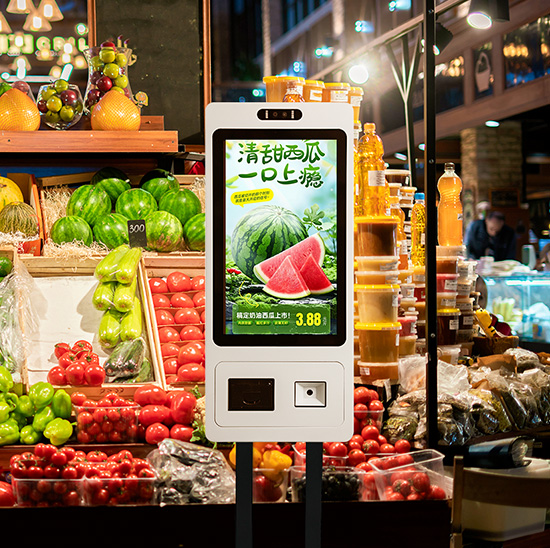Les écrans tactiles capacitifs ont révolutionné la façon dont nous interagissons avec les appareils numériques. Leur haute réactivité, durabilité, et la précision en font le choix préféré dans un large éventail d'appareils, des smartphones aux équipements industriels. Cependant, Comme toute technologie, Les écrans tactiles capacitifs peuvent rencontrer des problèmes qui peuvent compromettre les performances. Cet article plonge profondément dans les problèmes les plus courants rencontrés avec les écrans tactiles capacitifs, leurs causes potentielles, et des méthodes de dépannage pratiques.
Comprendre la technologie de l'écran tactile capacitif

Au cœur des écrans tactiles capacitifs se trouvent leur capacité à détecter les propriétés électriques d'un corps humain. Contrairement aux écrans tactiles résistifs qui nécessitent une pression physique, Les écrans tactiles capacitifs fonctionnent en mesurant le changement de capacité au point de contact. L'écran est généralement recouvert d'une couche d'oxyde d'indium (CE), un matériau conducteur. Quand un doigt (ou d'autres objets conducteurs) entre en contact avec l'écran, il perturbe le champ électrostatique, Permettre à l'appareil d'enregistrer l'entrée tactile. Pour une explication plus détaillée du fonctionnement des écrans tactiles capacitifs, vous pouvez vous référer à notre article sur le Principes de la technologie de l'écran tactile capacitif.
Le principal avantage des écrans tactiles capacitifs est leur haute sensibilité, Permettre une interaction lisse et réactive. De plus, Les écrans capacitifs prennent en charge les gestes multi-touch, comme le pincement à zoom, Les rendre idéaux pour les applications modernes. Leur durabilité est un autre avantage, car ils sont moins enclins à porter par rapport aux écrans résistifs. Malgré ces avantages, Les écrans tactiles capacitifs ne sont pas à l'abri des problèmes, Et comprendre la technologie derrière eux est crucial pour un dépannage efficace.
Problèmes communs avec les écrans tactiles capacitifs
Lorsque vous utilisez des écrans tactiles capacitifs, vous pouvez rencontrer une variété de problèmes. Voici quelques problèmes courants qui peuvent survenir:
- Écran tactile insensible: L'écran ne détecte pas ou ne répond pas aux entrées tactiles, résultant en aucune interaction.
- Touches fantômes: L'écran détecte des touches ou des entrées qui ne se produisent pas, conduisant souvent à un comportement erratique ou à des actions involontaires.
- Réponses tactiles erratiques: Détection tactile incohérente ou inexacte, où l'écran peut enregistrer une touche de manière incorrecte ou avec un retard.
- Scintillement des écrans: Une perturbation visuelle où l'écran clignote, flash, ou affiche des images intermittentes, affectant la visibilité et la convivialité.
- Affichage terne ou de faible qualité: Éclairage d'écran réduit ou mauvais rendu de couleur qui rend l'écran tactile difficile à utiliser, Surtout dans des environnements brillants.
- Touche trop sensible: L'écran détecte trop facilement les entrées tactiles, Même à partir de pinceaux ou de proximité involontaires, provoquant des actions involontaires.
- Zones mortes: Les zones spécifiques de l'écran ne parviennent pas à enregistrer l'entrée tactile, conduisant à des taches non réactives sur l'écran.
- Étalonnage tactile inexact: L'entrée tactile est enregistrée au mauvais endroit, provoquant une interprétation mal interprétée par l'appareil et des robinets utilisateur.
Dépannage des problèmes courants avec votre écran tactile capacitif

Lors du dépannage des problèmes d'écran tactile capacitif, Il est essentiel de comprendre à la fois les solutions générales et les solutions spécifiques adaptées aux problèmes individuels. Ci-dessous, Nous revisiterons d'abord quelques conseils de dépannage généraux, puis plongerons dans des solutions pour des défauts spécifiques.
Étape 1: Nettoyer l'écran
Commencez par nettoyer soigneusement l'écran tactile. Utilisez un chiffon en microfibre pour essuyer toute poussière, huile, ou empreintes digitales. Les huiles et la saleté sont des coupables communs pour provoquer une non-réponse ou un comportement tactile erratique. Utilisez toujours un doux, tissu non abrasif pour éviter de gratter la surface.
Étape 2: Redémarrez votre appareil
De nombreux problèmes liés aux logiciels peuvent être résolus avec un simple redémarrage. Le redémarrage de l'appareil peut aider à actualiser le contrôleur tactile et à effacer les problèmes temporaires qui pourraient affecter les performances de l'écran.
Étape 3: Effectuer un test d'écran tactile capacitif
Si l'écran continue d'afficher un comportement erratique, Envisagez d'effectuer un test d'écran tactile capacitif. Ces tests vous permettent de déterminer si l'écran réagit correctement dans tous les domaines. Il existe différentes applications et outils en ligne conçus à cet effet, qui affichent une grille ou un motif qui vous aide à identifier les zones non réactives de l'écran.
Étape 4: Calibrez l'écran
Si vous remarquez que l'écran tactile n'enregistre pas avec précision vos entrées, Le recalibrage de l'écran peut aider. Le logiciel d'étalonnage permet au capteur tactile de se réaligner avec la sortie de l'écran. L'étalonnage est accessible via les paramètres de votre appareil ou via des applications d'étalonnage tierces.
Étape 5: Vérifiez les mises à jour des logiciels et du pilote
Les logiciels ou les pilotes périphériques peuvent provoquer des dysfonctionnements de l'écran tactile. Assurez-vous que votre système d'exploitation et vos pilotes à écran tactile sont à jour. Les fabricants publient souvent des mises à jour qui adressent les bogues et améliorent les performances de l'écran tactile.
Étape 6: Vérifier les interférences
Les écrans tactiles capacitifs sont sensibles aux interférences électromagnétiques (EMI). Assurez-vous que votre appareil n'est pas utilisé près de solides champs électriques ou dispositifs émettant un rayonnement électromagnétique excessif, Comme cela peut conduire à des touches fantômes ou à un comportement erratique.
Étape 7: Tester les problèmes matériels
Si aucune des étapes ci-dessus ne résout le problème, Il peut y avoir un dysfonctionnement matériel. Les capteurs tactiles défectueux ou les contrôleurs peuvent nécessiter une inspection ou un remplacement professionnel. Dans de tels cas, Il est conseillé de contacter le fabricant ou un centre de service autorisé pour le diagnostic et la réparation.
Voici un tableau offrant un guide rapide pour aider à identifier et à résoudre efficacement les problèmes d'écran tactile capacitif communs.
| Problème | Cause | Solution |
| Écran tactile insensible | Glitch du logiciel, contrôleur tactile malfonctionnel, ou capteur endommagé. | Redémarrer l'appareil, Vérifiez les mises à jour logicielles, ou réinitialiser l'appareil. Pour les problèmes matériels, chercher une réparation. |
| Touches fantômes | Capteurs tactiles défectueux, dommage à l'écran, ou interférence de l'électronique. | Redémarrer l'appareil, supprimer les interférences externes, ou remplacez l'écran si nécessaire. |
| Réponses tactiles erratiques | Interférence électromagnétique, contrôleur tactile défectueux, ou problèmes d'étalonnage. | Désactiver les dispositifs externes provoquant des interférences, Recalibrer l'écran, et vérifier les mises à jour logicielles. |
| Scintillement des écrans | Connexions lâches, bogues logiciels, ou composants de mauvaise qualité. | Mettre à jour le micrologiciel, redémarrer l'appareil, ou obtenir une réparation professionnelle si les problèmes matériels persistent. |
| Affichage terne ou de faible qualité | Mode d'économie de batterie, Paramètres incorrects, ou dégradation du matériel. | Ajuster les paramètres d'affichage, Désactiver les modes d'économie de batterie, ou vérifiez les problèmes matériels tels que l'échec du rétroéclairage. |
| Touche trop sensible | Offres logiciels, Paramètres à haute sensibilité, ou interférence environnementale. | Ajuster les paramètres de sensibilité tactile, Recalibrer l'écran, et supprimer les interférences externes. |
| Zones mortes | Panne de matériel dans le capteur tactile ou les dommages à l'écran. | Redémarrer l'appareil, Nettoyer l'écran, recalibrer, ou demander une réparation professionnelle si le problème persiste. |
| Étalonnage tactile inexact | Bogues logiciels, facteurs environnementaux, ou contrôleur tactile défectueux. | Recalibrer l'écran, mettre à jour le micrologiciel, ou réinitialiser l'appareil. Si le problème continue, Considérons la réparation du matériel. |
Dépannage des écrans tactiles capacitifs pour différents appareils

Les écrans tactiles capacitifs sont couramment utilisés sur une large gamme d'appareils, Mais les problèmes de dépannage peuvent varier considérablement en fonction du type de dispositif. Vous trouverez ci-dessous des solutions sur mesure pour les problèmes d'écran tactile capacitif dans différents appareils, y compris les smartphones, comprimés, écrans tactiles industriels, et affichages en voiture.
1. Téléphones intelligents
Les smartphones éprouvent souvent des problèmes tels que des touches fantômes, insensibilité, et zones mortes. Les solutions courantes incluent le redémarrage de l'appareil, Assurer que l'écran est propre, et mettre à jour le logiciel système. Si le problème persiste, Il peut être nécessaire de recalibrer l'écran ou de remplacer le protecteur d'écran. Dans certains cas, Une réinitialisation d'usine peut résoudre les problèmes liés au logiciel.
2. Comprimés
Les tablettes partagent bon nombre des mêmes problèmes que les smartphones, Mais avec un écran plus grand, Des problèmes comme une défaillance multi-touch ou un temps de réponse lent peuvent être plus visibles. Pour les comprimés, La première étape doit être une mise à jour du système ou un redémarrage. Si les problèmes tactiles sont liés au matériel, comme un numériseur défectueux, une réparation ou un recalibrage professionnel peut être nécessaire. Il est également important de nettoyer l'écran et de s'assurer qu'aucun protecteur d'écran n'affecte la sensibilité tactile.
3. Écrans tactiles industriels
Les environnements industriels peuvent introduire des défis supplémentaires tels que les interférences électromagnétiques, poussière, et températures extrêmes. Ces facteurs peuvent affecter écran tactile performance, provoquant un comportement erratique ou une non-réponse. Dépanner, Assurez-vous que l'écran est propre et exempt de débris. Si des interférences sont suspectées, L'installation de blindage électromagnétique ou de l'utilisation de panneaux tactiles de qualité industrielle peut être nécessaire. L'étalonnage du système tactile et la mise à jour du firmware peuvent également aider à résoudre certains problèmes liés aux logiciels.
4. Affichages en voiture
Les écrans tactiles en voiture sont soumis à des problèmes uniques, y compris la chaleur élevée, lumière directe du soleil, et exposition à l'humidité. Ces facteurs peuvent provoquer un scintillement, zones mortes, ou non-respect. La solution implique généralement de régler les systèmes de contrôle de la température du véhicule ou de s'assurer que l'écran n'est pas exposé à la lumière directe du soleil. Pour les problèmes persistants, Vérifier les mises à jour logicielles ou recalibrer l'écran peut aider.
En comprenant les défis uniques de chaque type d'appareil, Les utilisateurs peuvent mieux identifier et résoudre les problèmes d'écran tactile capacitif, Assurer des performances optimales dans différents environnements.
Conseils de maintenance essentiels pour garder votre écran tactile capacitif en parfait état
Le maintien de votre écran tactile capacitif est essentiel pour prévenir les problèmes et prolonger sa durée de vie. Voici quelques conseils essentiels:
- Nettoyage régulier: Nettoyez l'écran régulièrement à l'aide d'un chiffon en microfibre pour éliminer les empreintes digitales, saleté, et l'huile qui peut nuire à la sensibilité au toucher.
- Utilisez un protecteur d'écran: Un protecteur d'écran de haute qualité aide à prévenir les rayures et à réduire le risque de dommage.
- Évitez les températures extrêmes: Les écrans tactiles capacitifs fonctionnent mieux dans une plage de température modérée. L'exposition à une chaleur ou un froid extrême peut affecter la fonctionnalité de l'écran.
- Touche douce: Évitez d'appuyer trop fort sur l'écran. Utilisez vos doigts pour de meilleurs résultats, comme pressant avec une force excessive peut endommager les capteurs capacitifs.
- Mises à jour logicielles régulières: Gardez le logiciel de votre appareil à jour pour assurer des performances et une sécurité optimales.
Pourquoi choisir Touchwo: Un fabricant d'écran tactile de premier plan pour vos besoins

Depuis 2009, Touche a été un fabricant de confiance et un fournisseur d'écrans tactiles capacitifs, avec une impressionnante capacité de production annuelle de 200 000 unités. Spécialisé dans les solutions tactiles hautes performances, Touchwo utilise des panneaux LCD premium de marques renommées comme Auo et Boe, Assurer des affichages de qualité A de qualité supérieure. Que ce soit pour l'électronique grand public, Équipement médical, ou applications industrielles, Nous livrons des solutions personnalisées qui répondent aux besoins uniques de votre entreprise. En mettant l'accent sur la fabrication de précision et le contrôle de la qualité rigoureux, Nous garantissons réactifs, durable, et écrans tactiles fiables.
Contactez Touchwo aujourd'hui Pour découvrir comment nos solutions tactiles innovantes peuvent élever vos produits!
FAQ
1. Ce qui fait que les écrans tactiles capacitifs ne répondent pas?
La non-réponse peut se produire en raison de divers facteurs, y compris les écrans sales, problèmes logiciels, ou dysfonctionnements matériels. Nettoyer l'écran, redémarrer l'appareil, et la mise à jour des logiciels ou des pilotes peuvent résoudre le problème.
2. Que sont les touches fantômes et comment puis-je les réparer?
Les touches fantômes sont lorsque l'écran enregistre des touches qui ne se produisent pas. Cela peut être causé par des problèmes logiciels, pannes matérielles, ou interférence externe. Redémarrer l'appareil, Mise à jour des pilotes, ou calibrer l'écran peut aider. Si le problème persiste, Cela peut indiquer un problème matériel plus profond qui nécessite une attention professionnelle.
3. À quelle fréquence dois-je calibrer mon écran tactile capacitif?
L'étalonnage est généralement nécessaire si vous remarquez des problèmes avec la précision tactile, comme l'entrée de l'enregistrement d'écran au mauvais emplacement. Nettoyer régulièrement l'écran et s'assurer que le logiciel de votre appareil est à jour peut minimiser le besoin d'étalonnage fréquent.
4. Un écran tactile capacitif peut-il être réparé s'il est endommagé?
Oui, Les écrans tactiles capacitifs peuvent être réparés ou remplacés s'ils sont physiquement endommagés. Cela implique généralement de remplacer le capteur tactile ou l'ensemble d'écran entier. Il est conseillé de demander l'aide du fabricant ou d'un technicien certifié pour les réparations.
5. Comment puis-je effectuer un test d'écran tactile capacitif?
Vous pouvez effectuer un test d'écran tactile capacitif à l'aide d'applications spécialisées ou d'outils en ligne. Ces outils affichent une grille à l'écran et aident à identifier les zones qui peuvent ne pas répondre ou affecter par des touches fantômes. De nombreux fabricants fournissent également un logiciel de diagnostic pour tester les performances de l'écran tactile.



